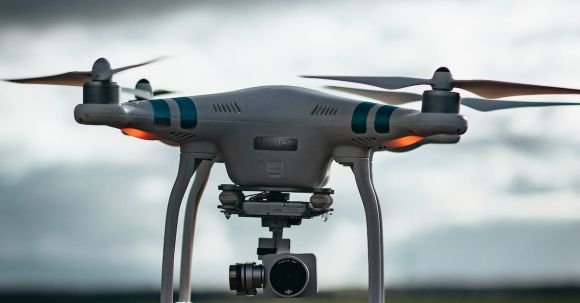In recent years, drones have become increasingly popular and have found their way into various industries. From aerial photography to search and rescue operations, these unmanned aerial vehicles have proven to be versatile tools. One area where drones have the potential to revolutionize operations is in the delivery service industry. With their ability to navigate through congested areas and deliver packages quickly, drones have the potential to transform the way goods are transported. However, there are several factors to consider before implementing drone delivery services on a large scale.
Advantages of Drone Delivery Services
One of the main advantages of using drones for delivery services is speed. Drones have the ability to bypass traffic and deliver packages directly to their destinations, resulting in faster delivery times. This can be particularly beneficial for time-sensitive items, such as medical supplies or perishable goods.
Another advantage is the potential for cost savings. Drones require fewer resources compared to traditional delivery methods, such as fuel and manpower. This can lead to reduced operating costs for businesses, which could potentially be passed on to the customers in the form of lower delivery fees.
Furthermore, drones have the ability to reach remote or hard-to-reach areas more easily than traditional delivery vehicles. This can be particularly useful in rural or inaccessible locations, where delivering goods can be challenging. Drones can help bridge the gap between urban and rural areas, ensuring that everyone has access to goods and services.
Challenges and Limitations
While the idea of using drones for delivery services is exciting, there are several challenges and limitations that need to be addressed before widespread implementation can occur.
One of the main challenges is regulatory compliance. Currently, many countries have strict regulations regarding the use of drones, including limitations on flight altitude, distance, and payload capacity. These regulations are in place to ensure safety and prevent misuse of drones. However, they can also limit the effectiveness and efficiency of drone delivery services. It is important for businesses and regulatory bodies to work together to develop clear guidelines and regulations that balance safety and operational requirements.
Another challenge is weather conditions. Drones are susceptible to weather elements such as rain, wind, and extreme temperatures. These conditions can affect the stability and performance of drones, making it difficult to guarantee reliable delivery services. Advances in drone technology, such as improved weatherproofing and navigation systems, will be crucial in overcoming this limitation.
Privacy and security concerns are also important considerations. Drones have the ability to capture images and record video, raising concerns about potential intrusions on privacy. Additionally, there is a risk of drones being hacked or stolen, which could lead to unauthorized access to personal information or misuse of the drones themselves. Implementing robust security measures and encryption protocols will be essential to address these concerns.
The Future of Drone Delivery Services
Despite the challenges and limitations, the future of drone delivery services looks promising. The potential benefits, such as faster delivery times and reduced costs, make it an attractive option for businesses and consumers alike. As technology continues to advance and regulations evolve, we can expect to see more widespread implementation of drone delivery services.
In conclusion, while there are challenges and limitations to overcome, drones have the potential to revolutionize the delivery service industry. The advantages of speed, cost savings, and accessibility make them an attractive option for businesses. However, regulatory compliance, weather conditions, and privacy concerns need to be addressed to ensure the safe and efficient use of drones for delivery services. With continued advancements in technology and collaboration between businesses, regulatory bodies, and the public, the future of drone delivery services looks promising.




